1. Introduction
As one of the biggest provinces in southwest China, Sichuan is known as a place of isolation due to the mountains surrounding it [1]. However, in recent years, Sichuan Province has paid more attention to the high railway. Up to now, there are 7 high railway lines in Sichuan [2].
However, the problem of the gap in regional development in Sichuan Province is very serious: Chengdu, the largest city in Sichuan, has a per capita GDP of 69,232 yuan from 2012 to 2021, while the second largest city, Mianyang, has only 41,596 yuan of per capita GDP; not mention to other cities in Sichuan. The gap between two cities is still considerable even with the development of economy.
Therefore, this paper explores how the construction of a high railway has an impact on the economy of Sichuan Province. Can high railway promote the solution to the problem of unbalanced development between regions?
2. General Analysis
GDP is the main indicator to measure the level of economic development in a region. We drew the following Figure 2 from the annual GDP growth rate data from 2012 to 2021 published by the governments of Zigong, Mianyang, and Leshan [3].
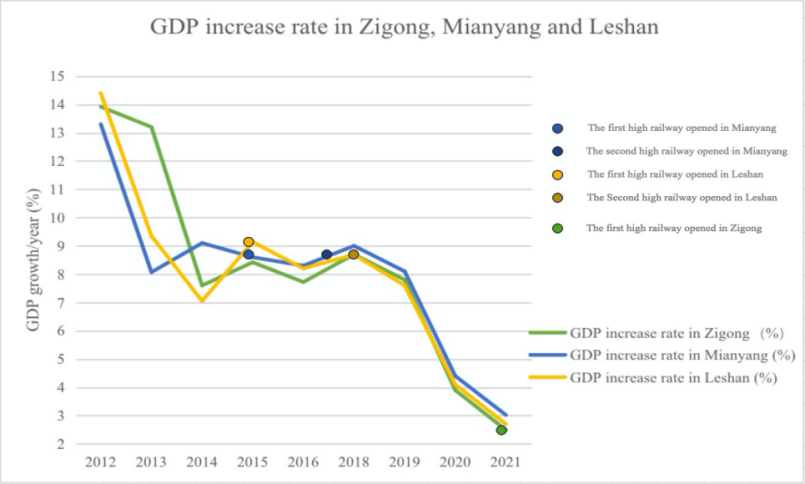
Figure 1: GDP increase rate in three cities.
The dots on the line in figure 2 represent the time when the city opened the new high railway line. The GDP growth rate of each city has not increased significantly after the city opened the high railway and even continued to slow down. Moreover, the trend of GDP growth before the opening of the high railway in Zigong is almost the same as that of the other two cities that already have high railway lines, which shows a correlation between the opening of the high railway and the overall economic growth of a city is very low. The construction of high railway does not help regional economic development strongly.
2.1. Specific Analysis: Tertiary Industry
The general analysis above does not mean that building a high railway will not help economic development. GPD is generally composed of the output of the primary industry, the secondary industry, and the tertiary industry. In China, the primary, secondary, and tertiary industries refer to agriculture, industry, construction, and the service industry respectively. It is possible that the construction of the high railway will help increase the output of the tertiary industry in Sichuan Province. Because the high railway only carries passengers, rather than goods, its development has promoted the faster flow of humans, and the main tertiary industry in Sichuan Province is tourism, we directly use the GDP growth of the tertiary industry to study the impact of the high railway on each city.
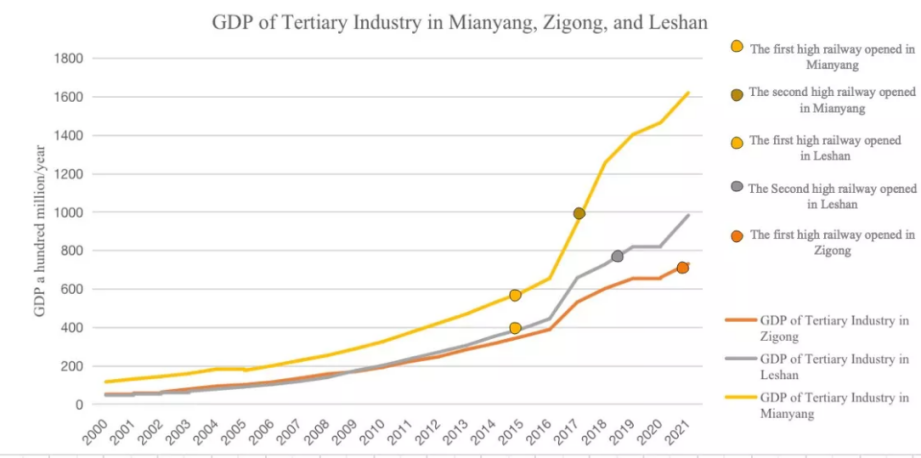
Figure 2: GDP of tertiary industry in three city.
The graph shows the GDP of the tertiary industry from 2000 to 2021 in Zigong, Leshan, and Mianyang. GDP in each city is increasing after the opening of the high railway. Especially for Leshan and Zigong, these two cities had similar GDP growth from 2000 to 2014, when the high railway was not open yet. However, in 2015, when Leshan opened the high railway, its growth began faster than Zigong. Therefore, a high railway indeed promotes the development of the tertiary industry. Nonetheless, although Zigong opened the high railway in 2021, it still has a development in the tertiary industry. So writers want to have a more detailed analysis of tertiary industry development to figure out what is high railway’s precise effect on Sichuan province’s economy.
2.1.1. Tourism
The main component of the tertiary industry in Sichuan Province is tourism. Sichuan has unique tourism resources, with 4 world heritage sites, 7 national 4A scenic spots, and 10 excellent tourist cities in China. Therefore, Sichuan takes advantage of its advantages to develop tourism. In 2021, Sichuan Province achieved domestic tourism revenue of 735.276 billion yuan and received 483,955,800 domestic tourists [4]. If the index amount is larger, it can reflect that people pay more attention to tourism and are more likely to go there.

Figure 3: Average index number for searching.
From the above graph, before 2018, the opening of the high railway has a positive relationship with the development of tourism, as the total amount of index is increasing in Mianyang and Leshan from 2012 to 2018. However, the graph also indicates that the high railway is not a deciding factor on tourism, considering that the search numbers in 2016 are relatively decreasing, though high railways open in the former year. Moreover, from 2018 to 2021, total index numbers are decreasing sharply; this makes sense because the influence of COVID-19 is so colossal that the whole economy around the world is depressed, which high railway cannot replenish that effect at all.
The part above manifests that the development of tourism and high railways are in a positive relationship. However, people in other provinces may also be interested in traveling to Sichuan provinces but taking other transportations like planes to go there. To exclude such a confounding variable, the author chooses Mianyang for further research.
The following graph shows the amount of index that people in Chengdu and Deyang, two cities that opened relatively early, search “Miangyang Tourism” online, and the amount of index that people in Guangyuan and Zigong, two cities that opened later, search “Miangyang Tourism” online. Four cities are located at a similar distance from Mianyang.
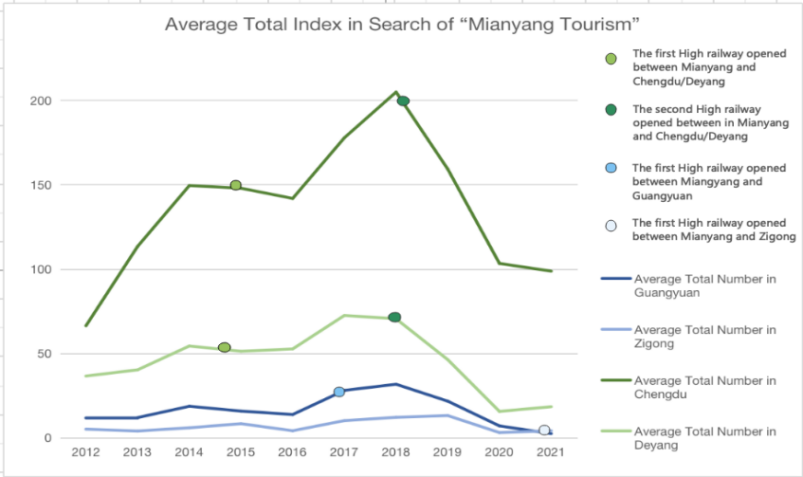
Figure 4: Average total index in search of “Mianyang Tourism”.
From the above figure, it can be concluded that the number of "Mianyang tourism" searches in cities that have opened railways has increased more than that of cities without opening. From the above figure, it can be concluded that the number of "Mianyang tourism" searches in cities that have opened railways has increased more than that of cities without opening. The search volume for "Mianyang tourism" by the people of Chengdu has increased by almost one-third, since the opening of the high railway from Mianyang to Chengdu. Nevertheless, as the four cities’ peaks are all in 2018, still, the high railway is not the most important influencing factor: when COVID-19 came (2019), even if there are new railways under construction, the development of high railway cannot absolutely affect people's development of tourism. The author takes a small questionnaire. Among 130 people in Sichuan, we also can see that the high railway is becoming more and more popular.
The following graph shows participants’ ages, options, and reasons.
There is a Case study to show the development of local tourism. Li Bai was one of the most famous and outstanding poets in China. In order to commemorate him, in his former residence, Jiangyou, Mianyang, Sichuan, a memorial hall was built in 1982 [5].
However, before the opening of the high railway to Jiangyou (in 2014), the passenger flow of Li Bai's former residence has been tepid: in 2013, Li Bai's Former Residence received a total of 358,600 tourists, and the tourism income was 137.4852 million yuan. Then, after the opening of the high railway, we found a significant increase: in 2016, Jiangyou received a total of 745,900 tourists, and the comprehensive tourism income was 420.8985 million yuan. In 2020, Jiangyou received a total of 3.6812 million tourists.
Unique rural tourism has attracted tourists from outside Xi'an, Hanzhong, Guangyuan, Deyang, and Chengdu, which is more popular than when there are only local tourists.
2.1.2. Education
The education industry in Mianyang is excellent, and it is the best in the development of the education industry in Sichuan Province except for Chengdu. At the basic education stage (primary to high school), many parents in Sichuan province want their children to go to Mianyang to receive a better education. After the opening of the high railway, the education industry in Mianyang may be more prosperous due to the reduction of transportation costs [6].
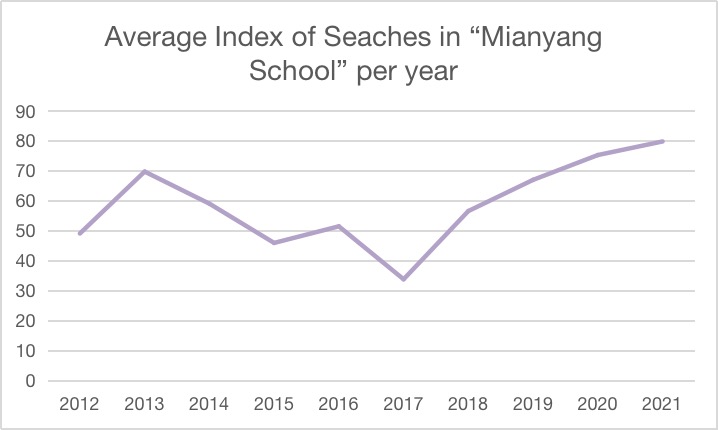
Figure 5: Average index of searches “Mianyang School”.
The total search volume of "Mianyang school" has continued to grow after 2017. In addition to this, there was an increase in search volume from 2012 to 2013 and 2015 to 2016. This can prove that at least after 2017, people are paying more and more attention to Mianyang education. It may be because people's willingness to go to school in Mianyang has become stronger, or more people are willing to go to school in Mianyang.
To verify that the increase in people's attention to Mianyang schools is related to the opening of the high railway, we once again obtained the distribution of the top ten cities in the
Search for "Mianyang schools" from the Baidu Index over a period of time, and then drew a Figure 8.
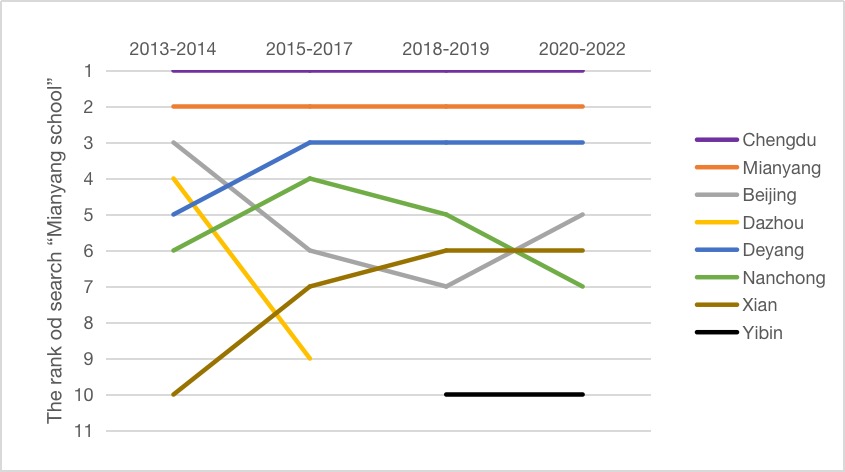
Figure 6: The rank of search “Mianyang School”.
From Figure 8, the search volume of "Mianyang school" in Chengdu and Mianyang has been the first and second from 2013 to 2022. Except for Beijing and Xi'an, other cities on the list From Figure 8, the search volume in Chengdu and Mianyang has been the first and second from 2013 to 2022. Except for Beijing and Xi'an, other cities in Sichuan Province, and the straight-line distance from Xi'an to Mianyang is only 505 kilometers [7]. At the beginning of 2015, Mianyang, Chengdu, Deyang, and Nanchong opened high railway and their rankings maintained or increased. However, the search volume of Dazhou, which has not yet opened high railway, fell out of the top ten. In 2017, the ranking of Xi'an high railway line and Mianyang also increased, and Yibin, which opened the high railway in June 2019, also entered the top ten rankings after that.
3. Literature Review
In a 2014 paper on China's National Trunk Highway System research by Professor Benjamin Faber of the Department of Economics, University of California Berkeley, he suggests that large-scale inter-regional transport infrastructure can lead to a reduction in industrial and total output growth among connected peripheral regions relative to non-connected ones, rather than diffusing production from metropolitan regions to the periphery [8]. Additional estimation results present further qualitative evidence in support of a mechanism based on falling trade costs between peripheral and metropolitan regions. Faber's conclusions are consistent with our analysis of GDP growth rates in Mianyang, Leshan and Zigong. Similarly, in the paper of Jingyu Chen of Beijing Jiaotong University, he used panel data from 18 prefecture-level cities in Sichuan Province from 2010 to 2018 to study the impact of the opening of high railway on the regional economy, and the empirical results showed that the construction of the Chengdu-mianyang-leshan high railway did not play a significant role in promoting the economic development of cities along the route [9]. The Same conclusion also be justified in Xingyue Zhuang’s article, study on the influence of high-speed railway on spatial pattern of regional economy in China [10].
4. Results and Discussion
There are four results of our research. First, the GDP growth rates of Mianyang, Leshan and Zigong tend to decrease no matter the high-speed rail opened in those city or not. Second, The GDP growth rate of the tertiary industry in cities with high-speed rail is greater than that in cities without high-speed rail. Third, the number of tourists to the attractions in the city has increased significantly in the year after the opening of the high-speed rail. Finally, cities in Sichuan Province will pay more attention to education in Mianyang after the opening of high-speed rail.
There are also some problems with our research. For example, when studying the correlation between the opening of high-speed rail and tourism development, we did not consider the local government's policies and the degree of marketing of scenic spots, which will also affect people's willingness to travel. But this does not have a big impact on our results, because in the time period we selected, the three cities did not have any special government policies that had a significant impact on tourism except during the COVID-19. Simultaneously, few of the three cities advertised as tourist attractions could result in a significant long time increase in number of tourists.
5. Conclusion
The development of regional cities is given many thoughts by the public. However, according to our research, the construction of a high railway cannot promote the overall GDP growth for a city. But it indeed encourages the faster improvement of a certain industry that already has potential development ability before the appearance of high railways. Mianyang's education industry and other cities' famous scenic spots are typical, which can gain assistance from high railway.
References
[1]. Libai, Shudaonan(Shu Road is difficult), https://www.gushici.net/chaxun/all.
[2]. Sichuan government, www.sc.gov.cn/10462/10464/10797/2016/5/16/10380367.shtml.
[3]. Forward-looking Database, China's macroeconomic data D.qianzhan.com.
[4]. Mca.gov.cn., national industries classification, https://www.mca.gov.cn/wap/article/sj/tjbz/b.
[5]. https://www.creegc.com/tabid/92/InfoID/970/frtid/98/Default.aspx.
[6]. Tourism Trends, Jiangyou Li Bai reason, Libaiguli.com.cn. 2022.
[7]. Baidu Index (2020) Index.baidu.com. https://index.baidu.com/v2/main/index.html#/trend/.
[8]. Faber, B. (n.d.). Trade Integration, Market Size, and Industrialization: Evidence from China’s National Trunk Highway System. Academic.oup.com. Retrieved July 22, 2022, from https://academic.oup.com/restud/article-abstract/81/3/1046/1605154.
[9]. Jingyu Chen, Weidong Li, Yongqing Xiao, Study on the Influence of high-speed Railway Construction on Sichuan Regional Economy -- Taking Chengdu-mianyang-Leshan High-speed Railway as an example (2020), https://kns.cnki.net/kcms/detail/detail.aspx?dbcode=CJFD&dbname=CJFDLAST2020&filename=LTKJ202011020&uniplatform=NZKPT&v=L5IlNpDyqGBOnoI516UK8wc33aFjCSckBID2E8WKqGXkvBIokJ7ooZ9lSGMfOeHj.
[10]. Xiingyue Zhuang, Study on the influence of high-speed railway on spatial pattern of regional economy in China (2021), https://kns.cnki.net/kcms/detail/detail.aspx?dbcode=CDFD&dbname=CDFDLAST2022&filename=1021102471.nh&uniplatform=NZKPT&v=g7b2oMJRbA8lPK1dTt1c07OxXiCGG9cAM8SHmPSJP3Py7PyhPli2bdUr8NEKWZi5.
Cite this article
Huang,Y.;He,M. (2023). The Economy Influence of the High Railway on Regional Cities Development in Sichuan Province. Advances in Economics, Management and Political Sciences,7,389-396.
Data availability
The datasets used and/or analyzed during the current study will be available from the authors upon reasonable request.
Disclaimer/Publisher's Note
The statements, opinions and data contained in all publications are solely those of the individual author(s) and contributor(s) and not of EWA Publishing and/or the editor(s). EWA Publishing and/or the editor(s) disclaim responsibility for any injury to people or property resulting from any ideas, methods, instructions or products referred to in the content.
About volume
Volume title: Proceedings of the 2nd International Conference on Business and Policy Studies
© 2024 by the author(s). Licensee EWA Publishing, Oxford, UK. This article is an open access article distributed under the terms and
conditions of the Creative Commons Attribution (CC BY) license. Authors who
publish this series agree to the following terms:
1. Authors retain copyright and grant the series right of first publication with the work simultaneously licensed under a Creative Commons
Attribution License that allows others to share the work with an acknowledgment of the work's authorship and initial publication in this
series.
2. Authors are able to enter into separate, additional contractual arrangements for the non-exclusive distribution of the series's published
version of the work (e.g., post it to an institutional repository or publish it in a book), with an acknowledgment of its initial
publication in this series.
3. Authors are permitted and encouraged to post their work online (e.g., in institutional repositories or on their website) prior to and
during the submission process, as it can lead to productive exchanges, as well as earlier and greater citation of published work (See
Open access policy for details).
References
[1]. Libai, Shudaonan(Shu Road is difficult), https://www.gushici.net/chaxun/all.
[2]. Sichuan government, www.sc.gov.cn/10462/10464/10797/2016/5/16/10380367.shtml.
[3]. Forward-looking Database, China's macroeconomic data D.qianzhan.com.
[4]. Mca.gov.cn., national industries classification, https://www.mca.gov.cn/wap/article/sj/tjbz/b.
[5]. https://www.creegc.com/tabid/92/InfoID/970/frtid/98/Default.aspx.
[6]. Tourism Trends, Jiangyou Li Bai reason, Libaiguli.com.cn. 2022.
[7]. Baidu Index (2020) Index.baidu.com. https://index.baidu.com/v2/main/index.html#/trend/.
[8]. Faber, B. (n.d.). Trade Integration, Market Size, and Industrialization: Evidence from China’s National Trunk Highway System. Academic.oup.com. Retrieved July 22, 2022, from https://academic.oup.com/restud/article-abstract/81/3/1046/1605154.
[9]. Jingyu Chen, Weidong Li, Yongqing Xiao, Study on the Influence of high-speed Railway Construction on Sichuan Regional Economy -- Taking Chengdu-mianyang-Leshan High-speed Railway as an example (2020), https://kns.cnki.net/kcms/detail/detail.aspx?dbcode=CJFD&dbname=CJFDLAST2020&filename=LTKJ202011020&uniplatform=NZKPT&v=L5IlNpDyqGBOnoI516UK8wc33aFjCSckBID2E8WKqGXkvBIokJ7ooZ9lSGMfOeHj.
[10]. Xiingyue Zhuang, Study on the influence of high-speed railway on spatial pattern of regional economy in China (2021), https://kns.cnki.net/kcms/detail/detail.aspx?dbcode=CDFD&dbname=CDFDLAST2022&filename=1021102471.nh&uniplatform=NZKPT&v=g7b2oMJRbA8lPK1dTt1c07OxXiCGG9cAM8SHmPSJP3Py7PyhPli2bdUr8NEKWZi5.









